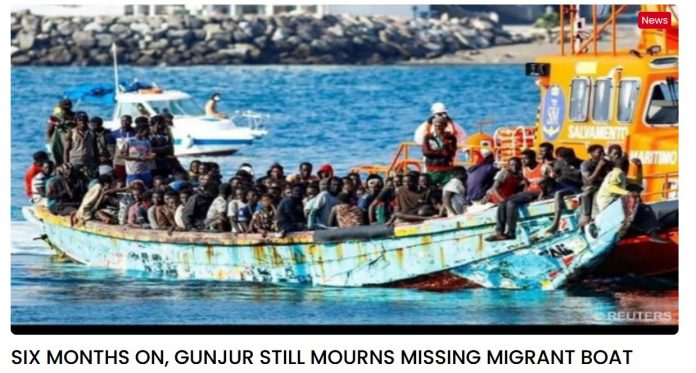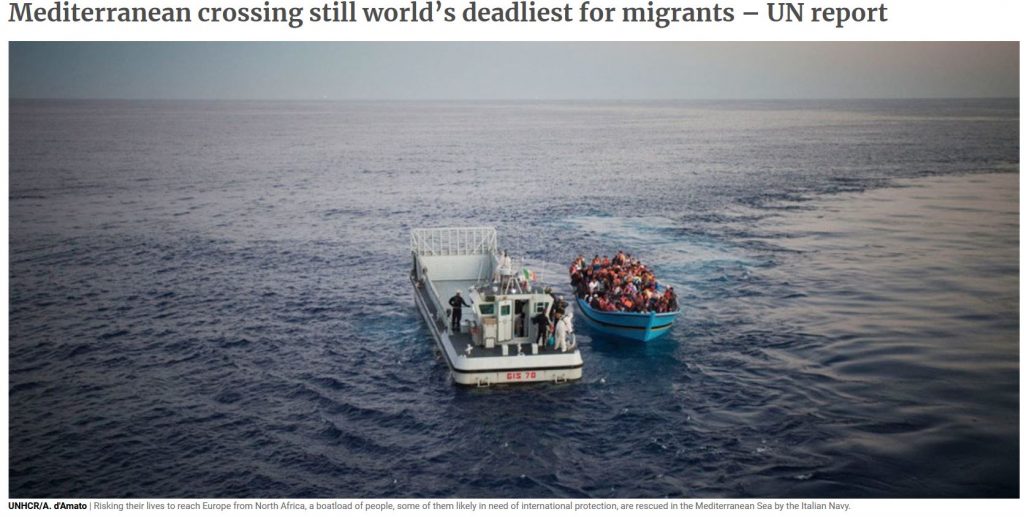
By Ndey Ceesay
Irregular migration, also known as the backway in The Gambia, has become a hot topic of discourse, both in political, economic and social discussions.
The International Organization for Migration (IOM) defines it as the movement that takes place outside the laws, regulations, or international agreements governing the entry into or exit from the state of origin, transit or destination.
There are different types of irregular migration such as human trafficking, smuggling, and overstaying in a country after the period of the legal stay expires.
Each of these forms of irregular migration is associated with grave dangers at different points and stages in the journey. In other words, people migrating irregularly can face a variety of risks on their journey. The risk of financial losses, risk of kidnapping and detention, physical assault, or even death are ever present.
Here are some common but non-exhaustive list of dangers that come with irregular migration.
The Boats
A number of migrants travel by boat from the shores of either The Gambia, Senegal or Mauritania to Europe, mainly Spain, Italy and Malta. There are lot of dangers that come with this. If the boat takes off, it may never arrive; it could capsised, get burnt or even lost on the high seas.

In December 2019, an IOM report indicated that 58 migrants died after their boat capsized near the coast of Mauritania, from The Gambia.
Recently, in May 2022, a news report by the Gambia Radio and Television Services has it that the whereabouts of a Spain-bound migrant boat which left the shores of Gunjur on 8th November, 2021 is “still unclear”.
There are several other news reports of different incidents of boat capsizing or getting burnt.
What do migrants go through in Niger
Niger has become a transit country for many migrants trying to reach Libya to cross the Mediterranean to Italy. Most of these migrants are smuggled through the borders of Niger to Libya.
In 2017, Niger passed Anti-Smuggling Laws to fight against smuggling with the help of the European Union. This has resulted smugglers increasing their prices and also increase incidence of kidnappings for ransom.
 The Sahara Desert
The Sahara Desert
Many more migrants die in the Sahara Desert en route to the Libyan crossing point. The Sahara Desert is a huge ungoverned region, and there are many criminal gangs and bandits who attack and kidnap migrants or rob them of their belongings.
The journey through the desert can take weeks. The terrain is difficult and the temperatures are very high during the day so cars could break down, leaving migrants stranded in the desert. Because of the vast nature of the desert, cars do get lost and migrants die of starvation and heat – like what happened in June 2022 when twenty migrants who had become lost in the Libyan desert near Chad were found dead.
Sometimes migrants suffocate and die in the back of trucks smuggling them and their bodies are not discovered until the truck is unloaded in Libya.
For example, in June 2017, seven African migrants died from suffocation after being locked for two days in a refrigerated truck abandoned by smugglers on the Libyan coast. People also die falling out of overcrowded trucks.
In Libya
In Libya, irregular migrants face jail terms, detentions and torture in the hands of the Libyan authorities, criminal gangs and smugglers. In some instances, as revealed by CNN in 2017, migrants are sold as slaves and some had some of their body organs removed.
The Mediterranean Sea
It is difficult to get on a boat in Libya as the beaches are patrolled, and migrants are regularly arrested, according to The Migrant Project. With support from the European Union, there is an increasing number of Libyan coastguards trained to stop smuggling boats in the Mediterranean Sea. Oftentimes after migrants pay money to agents for access to a boat, the agents take the money and disappear.
Smugglers often lie about the length of the journey and do not tell migrants that the boats are overcrowded, unsuitable for long sea journeys and are at risk of sinking.
In 2017, one in 36 migrants died attempting to cross the Mediterranean, and since the year 2014, some 16,850 migrants died during the crossing. Smugglers have shot migrants on the beach in Libya if they refuse to get on the boat, and the Libyan coastguard have also shot at migrant boats.
Crossing the Mediterranean Sea to Europe is by far the world “deadliest’’ journey for migrants, with at least 33,761 reported to have died or gone missing between 2000 and 2017, according to the United Nations.

Camps in Europe
Leaving one’s country to transit or stay in another country is a beginning of another life with different people, different laws, education, health and languages. A lot of adjustments are needed.
Some of the documented challenges faced by migrants after arriving includes finding affordable housing, and finding employment.
According to the State of New South Wales in Australia, migrants also face language and communication barriers, financial difficulties, visa insecurity, discrimination, racism, and mental health issues due to trauma.
In Italy
Once some migrants are able to make it out of camps and are no longer benefitting from the small handouts, some may find jobs working in the fields. In Italy, migrants are forced into modern day slavery by being forced to work in farms and ochards with little or no pay. In some instances, they are severely maltreated and undergo very poor living conditions, including sleeping under cracked walls and roofs and rotten matresses.













